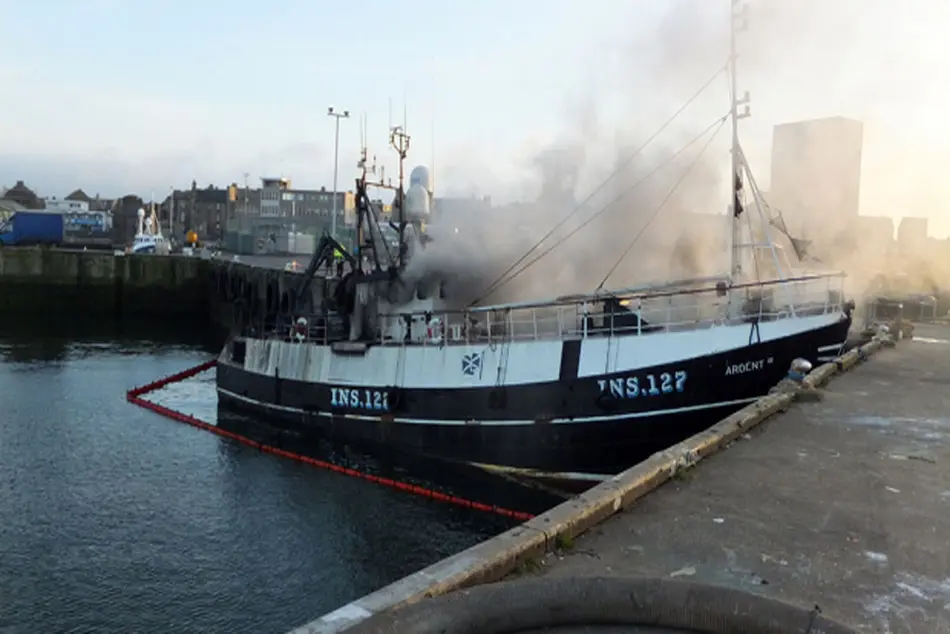|
News Code
135318
Copied
Electrical failure causes fire on board fishing vessel

The UK Marine Accident Investigation Branch (UK MAIB) issued an accident report, regarding a fire onboard the fishing vessel “Ardent II”, while alongside in Port Henry Basin, Peterhead, in August 2016. The investigation provides information on the causes and contributory factors of the incident, in order to prevent similar casualties in the future.
The incident
At approximately 0500 on 16 August 2016, a fire started in the crew mess room of the fishing vessel Ardent II, while alongside in Peterhead. The three crew sleeping on board escaped without injury, but the vessel was extensively damaged and later declared a constructive total loss.
The MAIB investigation identified that:
- An electrical fault or failure of a multi-socket adapter in the crew mess was the most likely cause of the fire
- There was no smoke detector fitted in the crew mess room and it was fortunate that one of the crew awoke and discovered the fire at an early
stage. This alerted the crew to the fire and enabled them to evacuate the vessel without delay.
- The fact the quay offered the crew a safe haven is likely to have influenced their decision to evacuate the vessel immediately, rather than to attempt to contain and extinguish the fire.
Safety Issues
- Unless electrical equipment is regularly visually inspected for bare wires, that appropriate fuses are in place, and for signs of burning, together with regular Portable Appliance Testing (PAT), the risk of an electrical fire occurring is increased.
- Without a comprehensive fire detection and alarm system that covers all spaces that pose a risk, fishing vessel crew, particularly those sleeping on board, cannot be confident of being alerted early enough to be able to take effective action.
Conclusions
- An electrical fault or failure of a multi-socket adapter in the crew mess room was the most likely cause of the fire.
- There was no smoke detector fitted in the crew mess room and it was fortunate that one of the crew awoke and discovered the fire at an early stage. It enabled the crew to be alerted to the fire and triggered them to evacuate the vessel without delay.
- The fact that the quay offered the crew a safe haven is likely to have influenced their decision to evacuate the vessel immediately, rather than to attempt to contain and extinguish the fire.
- MGN 501 (F), which contains guidance on fire protection, is intended to be made mandatory in 2017. This will mean that the crew mess rooms of fishing vessels like Ardent II are fitted with a means of fire detection in the future.
- Regular visual inspection of electrical equipment to check for bare wires, that appropriate fuses are in place, and for signs of burning, together with regular PAT, would provide an effective means for reducing the risk of electrical fires.
- Although not a contributory factor of this accident, access to a fishing vessel in an emergency is something that owners and operators should take fully into account as part of their risk assessment before allowing crew to live on board in port.
Further details may be found in the following report: